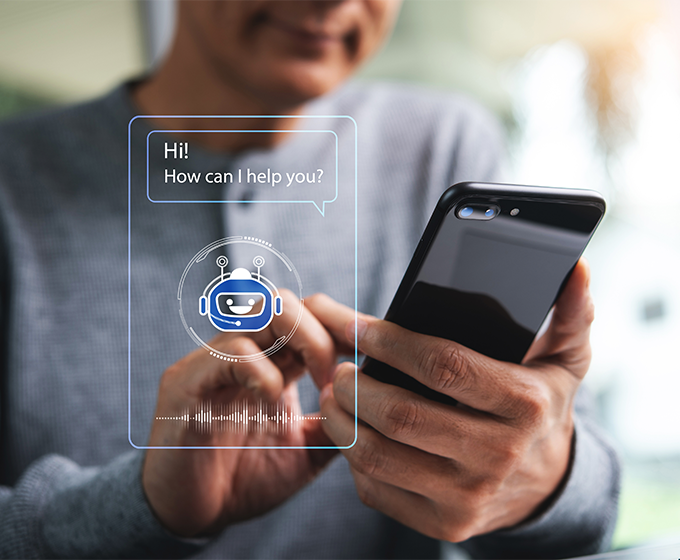Are AI chatbots as effective as doctors for advice on low back pain
AI chatbots, such as ChatGPT, show potential in providing advice on low back pain, with accuracy comparable to healthcare professionals in many cases. However, challenges remain in delivering clear, accessible guidance for a broad audience.

Low back pain impacts millions worldwide, prompting many to seek information online rather than directly from healthcare providers. (CREDIT: CC BY-SA 3.0)
A recent study shows that artificial intelligence (AI) chatbots, such as ChatGPT, may be nearly as effective as consulting a doctor for advice on low back pain. Conducted by an international research team, the study sheds light on the growing role of AI in addressing one of the world’s most common causes of disability.
Low back pain impacts millions worldwide, prompting many to seek information online rather than directly from healthcare providers. AI-powered chatbots are now commonly used to provide health-related recommendations, making it crucial to evaluate how accurate their advice is.
The study, Assessing the performance of AI chatbots in answering patients’ common questions about low back pain, published in Annals of the Rheumatic Diseases, explores just how reliable these AI tools are when it comes to managing this widespread condition.
According to Associate Professor Bruno Tirotti Saragiotto, one of the co-authors of the study and Head of Physiotherapy at the University of Technology Sydney (UTS), the study was designed to assess how well AI systems like ChatGPT respond to common questions from individuals suffering from low back pain. The researchers compared AI-generated answers to those provided by healthcare professionals to determine the effectiveness of these tools.
One key finding was that AI chatbots performed remarkably well in certain areas. For example, they were particularly strong when answering questions related to treatment suggestions and self-management of low back pain. Chatbots offered sound advice on questions like, “What complementary therapies, such as massage or acupuncture, might help alleviate low back pain?”
Additionally, AI consistently recommended exercise for preventing and managing low back pain, an approach widely regarded as effective by healthcare professionals.
Related Stories
However, not all chatbot responses were accurate. In particular, questions about risk factors for low back pain revealed significant gaps in AI’s performance. One major issue was that chatbots often repeated the incorrect claim that poor posture is a direct cause of low back pain. In fact, this misconception appeared in 88% of responses despite medical evidence to the contrary.
Dr. Giovanni Ferreira, a Research Fellow at the University of Sydney Institute for Musculoskeletal Health and another co-author of the study, commented on this finding. “Our research indicates that AI chatbots have the potential to be a valuable resource for those seeking initial guidance on managing low back pain,” he explained. “But it’s important to note that these tools should complement, not replace, professional medical advice.”
One of the promising aspects of AI chatbots identified in the study was their ability to identify cases that required medical intervention. The chatbots correctly advised users to consult a healthcare professional in 70-100% of cases where medical referral was deemed necessary.
This ability to recognize more serious issues requiring professional care highlights the potential of AI as a useful tool in early diagnosis or management, especially for those who may hesitate to seek medical attention right away.
Despite these encouraging results, the study also revealed some limitations. One of the most significant challenges was the complexity of the information provided by chatbots. The language used in AI responses was often too advanced, making it difficult for some users to understand.
“While the accuracy of the AI-generated advice was impressive, we must consider the accessibility of this information,” said Associate Professor Saragiotto. Many responses were suitable for individuals with at least a 10th to 12th-grade reading level, but this could limit the tool’s utility for a broader audience.
In recent years, the demand for online health resources has grown as people increasingly turn to digital tools for guidance. Many individuals prefer to seek information online before consulting a doctor, or sometimes in place of professional care.
Given this shift, the development of reliable and accessible AI health tools is becoming more critical. The study underscores the importance of recognizing both the capabilities and the limitations of these tools in providing advice on managing conditions like low back pain.
Saragiotto emphasized that while AI technology is rapidly advancing, it still has room for improvement. "As AI technology continues to evolve, further research will be necessary to refine these tools and ensure they can provide accurate, accessible, and safe health information to the public,” he said. This highlights the need for continuous development to ensure that AI-based health solutions remain reliable and useful to a diverse range of users.
The findings from this study suggest that AI chatbots, while not a substitute for professional medical care, have the potential to serve as a helpful initial resource for managing low back pain. Their ability to offer advice on treatments and recognize situations requiring a doctor’s visit shows promise, but further refinement is needed to ensure that their recommendations are both accurate and accessible to all users.
As the use of AI in healthcare continues to grow, it is clear that these tools will play an increasingly important role in managing common health concerns. But healthcare professionals and AI developers alike must work together to improve the reliability and clarity of these resources.
Note: Materials provided above by The Brighter Side of News. Content may be edited for style and length.
Like these kind of feel good stories? Get The Brighter Side of News' newsletter.



